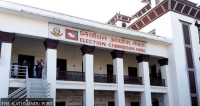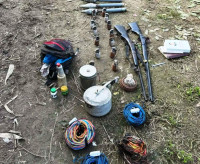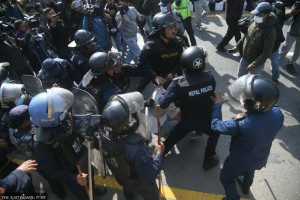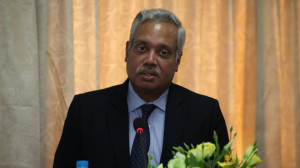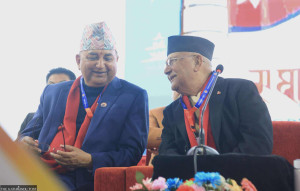National
kalanki-koteshwor road project: Authority extends deadline third time
Authorities on Friday extended the deadline for the third time to complete the 10km Kalanki-Koteshwor road section.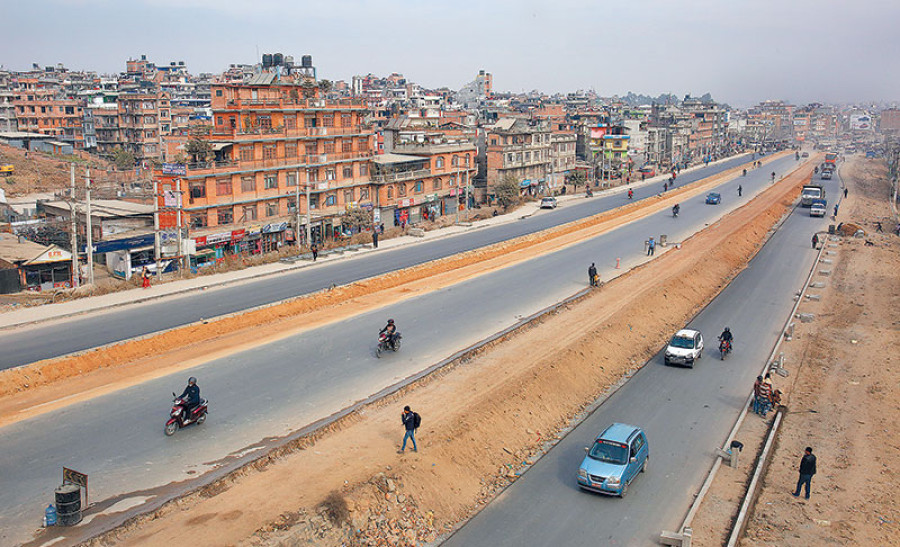
Anup Ojha
Authorities on Friday extended the deadline for the third time to complete the 10km Kalanki-Koteshwor road section.
The road project was scheduled for completion in 2017. Various delays compelled the authorities to extend the date to July 2018 due to 2015 earthquake and the border blockade imposed by India. The latest extension is December 2018.
Kathmandu Ring Road Improvement Project (KRRIP) Engineer Niranjan Shrestha, told the Post, “The Chinese company Shanghai Construction Group has said it would require another six months to complete the project. The construction company requested us to extend the deadline to December 2018 during our meeting held this Wednesday.”
The Chinese company had started the Kalanki to Koteshwor road project in 2013. It has asphalted the road section, around 8.6 km, from Balkhu to Koteshwor. The road is dust and traffic jam free.
Currently, the Chinese company is in a dilemma since other government departments’ construction materials like electric poles, water pipe lines, sewerage, and cables lie on both sides of the road from Balkhu to Khasibazaar.
The scattered construction materials are a nuisance to local residents, daily commuters and motorists.
Workers removed the old asphalt layer above the road one year ago, but the excavators, used to dig the road, continue to lie in the service lane, blocking people and vehicular movement.
Haphazardly parked private vehicles and public transport, heading to Hetuda, occupy whatever little space is left on the service lanes in Balkhu. The service lanes, under construction, have turned into a parking area for lorries.
Narrating her ordeal, Gyankunja Higher Secondary School, Rabhibhawan, teacher Ribu Luitel said, “It is a nightmare to commute through this area. I had a harrowing experience last Sunday when I fell down on the muddy path and hurt myself. I’m compelled to go through this area since there is no other alternative.”
A resident of Panga, Kirtipur, Luitel crosses the Ring Road every day. It is often slushy when it rains and dusty when the weather is sunny and dry.
Luitel is typical example of a harassed citizen. Hundreds of other commuters, young, middle age and senior citizens use this road in Balkhu every day. It is an ordeal for all.
Sharing his daily woes, Tribhuvan University Master’s programme student Gehirendra Sharma said, “I’m often late for my lectures because of the traffic jam in Balkhu. The dust pollution is unimaginable here. My clothes get dirty every day.”
Traffic police officers are the worst affected because they stand through the day and suffer the dust, grime and vehicular pollution.
The traffic police officers suffer health issues and fatigue because of the vehicular emissions from the high-density traffic between Balku and Khasibazaar.
Balkhu Traffic Police Range In-charge Krishna Paudel said, “Our officers have to manage vehicles coming from Kalamati, Koteshwor, Kirtipur and Kalanki. Sometimes it is so dusty that is difficult to see vehicles clearly. When it rains, it is difficult to walk on the soft slushy road.”
The Department of Roads (DoT) that carries out road construction in the valley has done nothing to alleviate the ordeal face while commuting through this area.
Although, the Home Ministry has launched a crackdown on non-performing and under-performing contractors, the government body has not said anything on this issue so far.
The Chinese company Shanghai Construction Group had started the Kalanki to Koteshwor project in 2013. The road section around 8.6 km from Balkhu to Koteshwor is already been asphalted and the road is dust and traffic jam free.
Nine people have died in the eight-lane road section, according to the Metropolitan Traffic Range Lalitpur. Police data shows nearly 300 major and minor accidents occurred in the newly constructed road. It is dangerous because it lacks road dividers, zebra crossings, inadequate overhead bridges, night-lights, traffic signals and parking stations.




 8.12°C Kathmandu
8.12°C Kathmandu.jpg)
%20(1).jpg&w=200&height=120)

